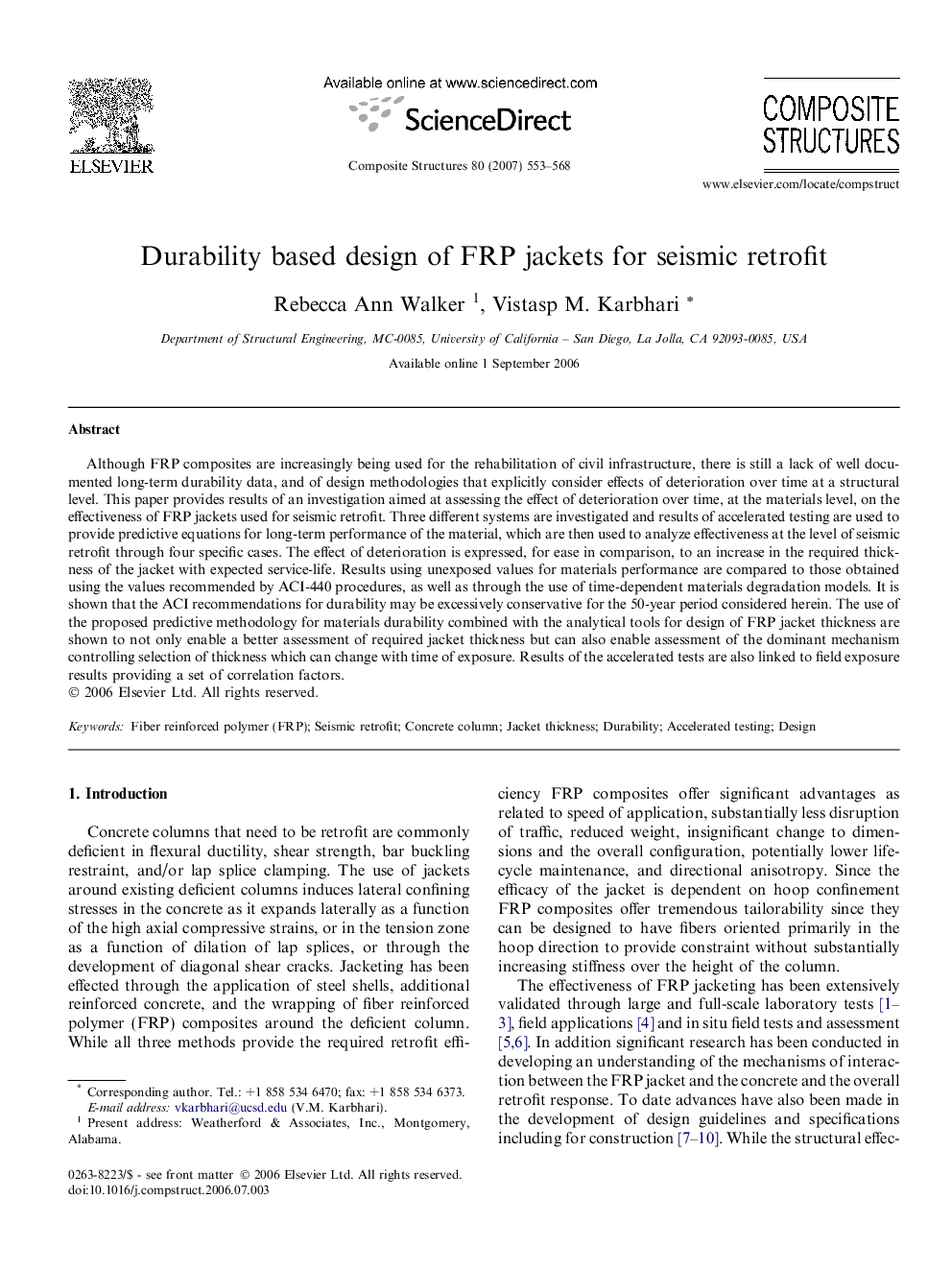| Article ID | Journal | Published Year | Pages | File Type |
|---|---|---|---|---|
| 253871 | Composite Structures | 2007 | 16 Pages |
Although FRP composites are increasingly being used for the rehabilitation of civil infrastructure, there is still a lack of well documented long-term durability data, and of design methodologies that explicitly consider effects of deterioration over time at a structural level. This paper provides results of an investigation aimed at assessing the effect of deterioration over time, at the materials level, on the effectiveness of FRP jackets used for seismic retrofit. Three different systems are investigated and results of accelerated testing are used to provide predictive equations for long-term performance of the material, which are then used to analyze effectiveness at the level of seismic retrofit through four specific cases. The effect of deterioration is expressed, for ease in comparison, to an increase in the required thickness of the jacket with expected service-life. Results using unexposed values for materials performance are compared to those obtained using the values recommended by ACI-440 procedures, as well as through the use of time-dependent materials degradation models. It is shown that the ACI recommendations for durability may be excessively conservative for the 50-year period considered herein. The use of the proposed predictive methodology for materials durability combined with the analytical tools for design of FRP jacket thickness are shown to not only enable a better assessment of required jacket thickness but can also enable assessment of the dominant mechanism controlling selection of thickness which can change with time of exposure. Results of the accelerated tests are also linked to field exposure results providing a set of correlation factors.
